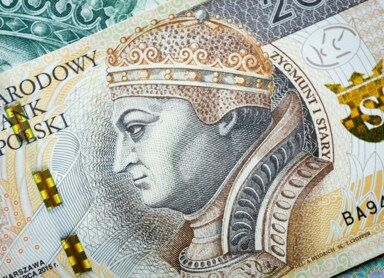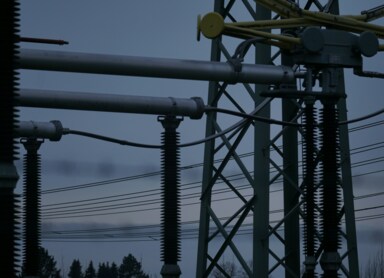What is an energy certificate? We take a closer look at the issue of 'coloured' certificates
In recent years, the European Union has been intensifying its efforts to reduce greenhouse gas emissions and increase the share of renewable energy sources in its total energy production. In this context, renewable energy also from biomass is becoming a key element of the energy transition.
What is an energy certificate? Introduction
The cost-effectiveness of using infrastructure largely depends on how much energy 'escapes' from it. By choosing to buy or lease a building that is energy efficient, you are not only looking after the environment, but also reducing business expenses.
A key role in assessing this energy efficiency is played by the building's energy performance certificates, otherwise known as energy certificates or energy passports. They have been present in the Polish legal order for years, but in 2023 they underwent a real revolution. Currently, energy certificates are regulated by the amended Act of 29 August 2014 on the energy performance of a building1.
Energy certificate - what are its main objectives and importance in the context of sustainable development?
Energy certificates are part of the philosophy of sustainable development. It is an economic doctrine initiated back in the late 20th century by the World Commission on Environment and Development. A report prepared by it2 defined sustainable development as "meeting the needs of the present generation without diminishing the chances of future generations to meet their needs".
Sustainability can be achieved in many ways, including investment in renewable energy sources (RES). However, in order for the energy generated to be used efficiently, it is essential that the infrastructure that uses it is sufficiently energy efficient.
The purpose of an energy performance certificate is to promote passive buildings that minimise energy consumption and demand. This energy assessment applies not only to new buildings, but also to existing buildings, assessing their performance and acting as a kind of summary of environmental achievements in the building sector.
Energy performance certificate - what is it and what information does it contain?
According to Article 3(1) of the above-mentioned Act, the preparation of an energy performance certificate is primarily ensured by the owner or manager of the building. Such a document should be prepared both when concluding a sales contract and when signing a lease. The obligation to draw up certificates does not apply only to the facilities listed in Article 3(4) of the Act, i.e. buildings
- subject to protection under the provisions on the protection and care of historical monuments;
- used as a place of worship and for religious activities;
- industrial and commercial buildings not equipped with energy-consuming installations, excluding built-in lighting installations;
- residential buildings which are intended to be occupied for no more than 4 months of the year;
- detached houses with a floor area of less than 50m2;
- for agricultural holdings with adequately low non-renewable energy requirements.
If the certificate relates to a building that is the subject of a sale, it should be provided at the time the contract is concluded before a notary. This information should be included in the notarial deed.
Remember that the energy performance certificate can only be drawn up by an authorised person. Have it drawn up by a specialist with the necessary competence. Above all, they must be on the list of persons authorised to draw up energy performance certificates. The document is valid for 10 years after it has been drawn up. After this time, it must be renewed.
What data does an energy performance certificate contain?
Each energy passport has a specific structure. It should contain information on:
- the identity of the building or parts of the building for which the certificate is drawn up;
- the energy performance of the building or parts thereof;
- recommendations specifying the scope and type of construction and installation works that will improve the energy performance of the building;
- a statement by the person drawing up the certificate that the document has been generated from a central register.
The energy demand of a building is determined by several coefficients on an annual basis. The main ones are EP (non-renewable primary energy), EK (final energy) and EU (usable energy). The energy passport also takes into account the carbon footprint and the contribution of RES to the final energy demand.
The EP parameter determines the quality of the fuel used to heat the building. The greener it is, the lower the EP will be. EK defines how much it will cost to heat a building, taking into account energy losses, the efficiency of the heat source and other factors. EU, on the other hand, refers to the amount of energy lost. Sources of this loss can be, for example, thermal bridges in door and window frames or inefficient air conditioning.
The interpretation of the result on the certificate itself is intuitive. At the bottom of the certificate, there is a large, coloured scale. The further to the left the arrow is, the better, because the building is more 'ecological'.
White energy certificate - what is it and what benefits can it bring?
White energy certificates are a solution aimed at entrepreneurs to promote investments in energy efficiency. They are included in the Energy Efficiency Act3 and are issued by the President of the Energy Regulatory Office (ERO) at the request of a company.
You can apply for a white certificate if your company plans to carry out investments to increase the energy efficiency of your building. Such works may include:
- thermo-modernisation of the building;
- insulation of industrial installations
- modernising or replacing lighting or equipment or installations used in industrial processes.
Obtaining a white certificate is a double benefit for a company. On the one hand, it operates more economically, so it generates higher profits. On the other hand, the certificate can be traded on the market on the Polish Power Exchange. The more savings you manage to obtain, the more expensive you can sell the white certificate.
What are 'coloured certificates' and what is their significance?
Coloured certificates are intended to support the development of renewable energy. The current legislation imposes an obligation on electricity producers and electricity traders to obtain and submit for redemption to the President of the ERO particular types of energy certificates, alternatively, to pay a substitution fee.
The coloured certificates are divided according to the type of energy used. In practice, a distinction is made between blue, white, green, purple, red and yellow certificates.
Energy certificates are an important document for any company that uses property in its day-to-day operations. Its acquisition reflects the company's commitment to the environment and provides an opportunity to generate additional profit. If you too want to get started on green energy, contact us: https://reo.pl/pl/kontakt#kontakt.
1. https://isap.sejm.gov.pl/isap.nsf/DocDetails.xsp?id=wdu20140001200
2. https://sustainabledevelopment.un.org/content/documents/5987our-common-future.pdf [dostęp: 14.03.2024 r.]
3. https://isap.sejm.gov.pl/isap.nsf/DocDetails.xsp?id=WDU20160000831






